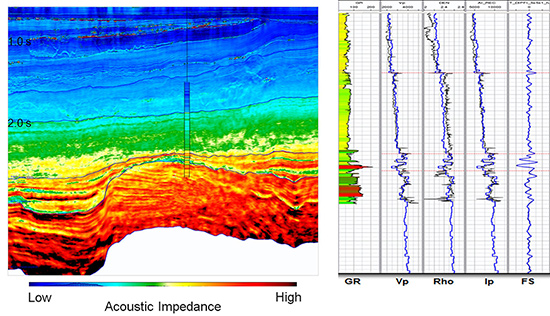Integrated Geoscience Unlocks Potential in Northern Viking Graben
Paris, France | Nov 17, 2016
Combining geology with broadband seismic provides new insight into petroleum plays and prospectivity
The Northern North Sea is host to many large discoveries, such as Troll, Statfjord and Brage, but recent finds such as Brasse imply that more potential fields are waiting to be discovered. The key to understanding these mature petroleum areas is to consider all the geoscience data available to reduce uncertainty and risk. This is why CGG offers integrated studies combining broadband seismic data with geology, well data and reservoir characterization to increase the understanding of petroleum plays and identify new prospects. The Northern Viking Graben study is the largest and most complete of these integrated studies that CGG has been developing in many areas of the world.
The Northern Viking Graben multi-client broadband seismic survey was acquired using CGG’s full-bandwidth BroadSeis™-BroadSource™ solution, combining a multi-layer broadband source and curved variable-depth streamer profiles with advanced imaging technology to deliver ghost-free data. The high-resolution seismic data set covers approximately 36,000 km2, straddling the border between the Norwegian and UK sectors of the North Sea. Integration of gravity data acquired with the seismic is being used to help define the basement depth. The broadband seismic data are a key component of an integrated study which will incorporate regional well correlation, prospectivity reviews, seep studies from geochemistry and satellite imagery, sedimentological and petrophysical analyses, gravity data and seismic reservoir characterization, to deliver a comprehensive geoscience package.
CGG’s Northern Viking Graben Well Study complements the seismic data and comprises 50 wells, all of which have been re-evaluated, tied and calibrated to the seismic. These well data have come from many different sources and consist of edited petrophysical logs, well-to-seismic calibrations, sedimentary descriptions of core, electrofacies analyses and re-interpretation of biostratigraphy samples. Extensive quality control is performed on all these data before correlation and interpretation with the seismic to provide a fully integrated and calibrated product for use in prospect evaluation.
Well-to-seismic calibration was carried out with careful assessment of wavelet character at the location of the well, the quality of the wireline used for the synthetics, and also the general well condition. This eliminates discrepancies seen within original checkshot information available from the NPD (Norwegian Petroleum Directorate), especially in the shallow section. Calibration of the geological samples with the core description enables improved petrophysical analysis. By assigning facies to the core, it is possible to extrapolate these petrophysical characteristics away from the cored sections and improve electrofacies interpretation. These results were applied to the re-analysis of biostratigraphic data from many different sources, such as data collected during drilling, cuttings from core and data available through literature and reports. This re-evaluation was then used to review the lithostratigraphy and improve the accuracy and consistency of formation tops. These well results were then tied to the broadband seismic data and mapped across the entire survey.
The seismic data benefit from close interaction between the different CGG geoscience teams and are being processed through a comprehensive reservoir-oriented QC workflow, which ensures the final delivered data require minimal pre-conditioning before elastic inversion and reservoir characterization studies. In this workflow the data are migrated at various key stages to check the evolution of well ties, wavelet stability and AVO compliance. Information from several pre-selected wells is integrated and maps of relevant QC products, following horizons, are checked for conformity with known geological information.
3D AVO attribute generation and 3D deterministic acoustic inversion have been completed for two projects totalling approximately 3,200 km2 over the Ryggstein Ridge and the Måløy Slope where the final data are available. Quantitative seismic interpretation is a critical addition to the exploration toolbox and the acoustic inversion route was chosen as it can be driven by the seismic data. On account of the low frequencies inherent in BroadSeis, acoustic inversion based on scaled seismic velocities provides reliable inverted Vp and acoustic impedance results. The CGG logs created as part of the Well Study, were used to define the local Gardner relationships, and also as blind tests for the inversion. Results over the Skarfjell discovery, see figure, demonstrate a very good match between the inverted attributes in blue and the well log in black.
These reservoir characterization projects and integrated studies will be extended to cover the entire Northern Viking Graben survey and will provide a comprehensive understanding of petroleum systems in the Northern North Sea to help develop new play models and identify prospects. The studies completed so far are just the beginning of the targeted integration of geology with broadband seismic to help reduce the uncertainty experienced when attempting to understand petroleum systems. Visit CGG on booth # E24 to find out more about integrated geoscience solutions.






